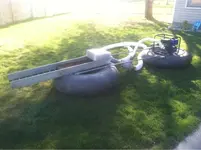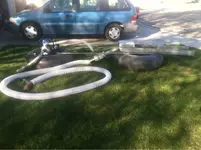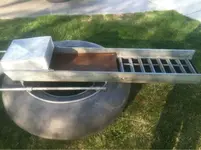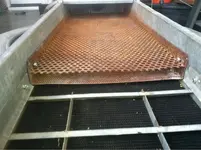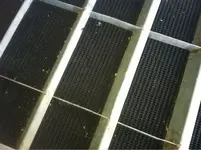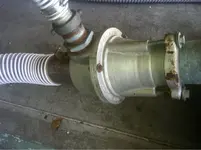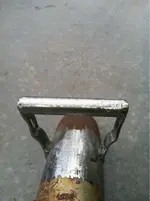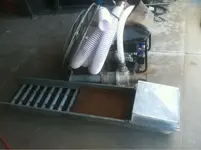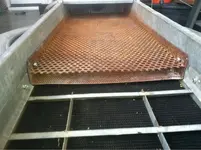Yes sir the "T"fitting will be an issue. The water from the pump needs to be directed up the pipe towards the hopper to maintain velocity and create a suction on you 4" line. As it stands the water from the discharge of your pump will essentially "crash" into the back of the "T" fitting and lose velocity. Then water will also head down your suction line and some will head towards the crashbox. The way it is now you won't have great suction if any and your sluice box won't have water flow to properly work. With that pump you need the water to flow the easiest way possible with the least resistance as that pump will be straining to push a 4" nozzle. The best bet would be a traditional dredge nozzle with the shortest hose possible for that pump as it would allow the pump to work the easiest with the most pressure. I would say run 2" off your pump and reduce it down to 1 1/2" for the nozzle as that would build a little more pressure. You need to keep the hose as short as possible also as friction loss in your hoses adds up relatively quick and will also eat psi (I'll attach a friction loss calculator below from my firefighting days when I was an engineer so you can see how much psi loss you have in different hose sizes). I want to say if you're running an 1 1/2" hose with a 150 gpm pump and 20 feet of hose you're losing 10 psi or so. That doesn't sound like much but if you only have 40 psi to start with you just lost 25% of your pressure before it even hits the nozzle. Those Chinese pumps are a volume pump (more water volume, less pressure) and not a pressure pump (more pressure, less volume). A pressure pump is what's really required to work properly on a dredge set up for the best suction.
Here is the link for the friction loss calculator. Nobody really thinks about this stuff (only reason I do is because I was in the fire service) but on lower pressure pumps it makes a big difference.
Fire Hose Friction Loss Calculator
Just some food for thought if you want the best possible dredge. As I've said before the pump IS the most important part of a successful dredge, this is one area where a little more money spent pays for itself over and over with the best possible operation and a minimum of issues.
Thanks, Chris



